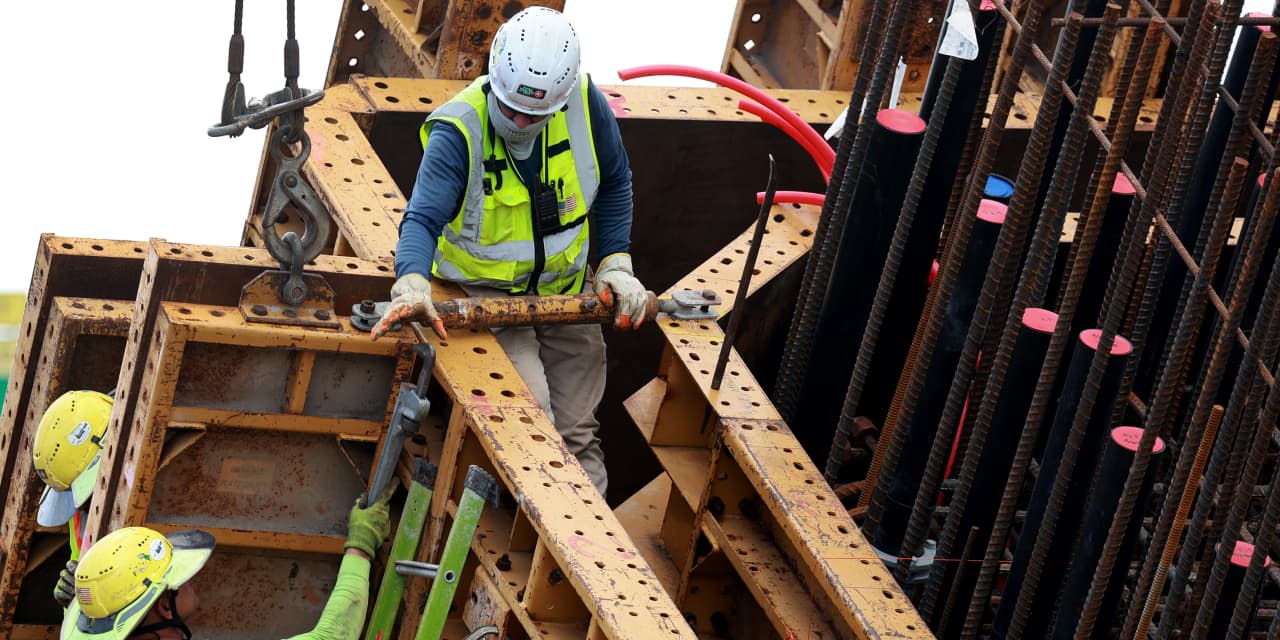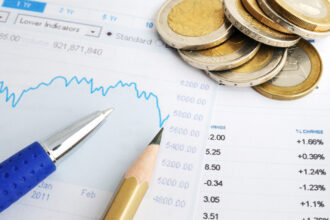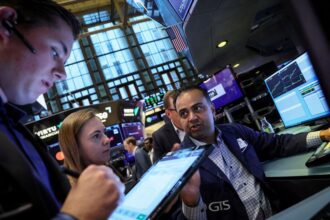When interest rates rise rapidly, the U.S. has usually experienced rising layoffs and unemployment if not outright recession.
Not this time.
The economy, in turn, has kept expanding at a pace that analysts say is above its normal speed limit. A recession seems no where in sight.
Nor is there any sign the labor market is about to suffer a deep freeze like the current weather around much of the country.
Take jobless claims, a proxy for layoffs. They fell last week to a 16-month low of 187,000 and clung close to the lowest level in more than 50 years.
Jobless claims are actually even lower now than they were when the Federal Reserve fired off a staccato of interest-rate increases starting in March 2022.
The Fed hiked rates rapidly over a 16-month period to try to slow the economy and cut off the sources of high inflation bedeviling American households and businesses.
The central bank raised its benchmark short-term rate from near zero to a top end of 5.5%, ending a pandemic-enhanced era of easy money. Other interest rates also rose, especially for mortgages, auto loans and credit cards.
The higher cost of borrowing has helped to slow inflation, all right. The rate of inflation is going up just 3% now, compared to a 40-year peak of 9.1% a year and a half ago.
The hard-won gains on inflation have not come at the cost of massive job losses, as with past episodes of Fed rate-raising. Far from it.
Employment growth has slowed, to be sure. Hiring has dried up in U.S. manufacturing, one of the sectors hurt most by rising interest rates.
Yet some other major industries are still adding jobs. Businesses in leisure and hospitality — think hotels and restaurants — created nearly a half-million jobs in 2023.
What higher borrowing costs have done, however, is reduce the demand for labor. And that’s best seen through job openings.
The number of job listings nationwide fell in November to a 32-month low of 8.79 million. Openings had reached a record 12 million when the Fed first began to raise rates in March of 2022.
“This suggests that businesses are not laying off workers but are cutting back on hiring,” noted longtime economist Stuart Hoffman, an advisor at PNC Financial Services.
That’s exactly what senior Fed officials had hoped to see.
Once they began to raise rates, Fed Chairman Jerome Powell and his colleagues said they wanted the number of job openings per unemployed worker to return to pre-pandemic levels. They put a lot of emphasis on that.
There were about 1.2 job listings per unemployed worker before the onset of the pandemic in early 2020. The ratio soared to a record 2.0 just as inflation was near a peak, underscoring the leverage employees suddenly had over employers.
They used their newfound power to demand higher pay, adding another potential source of inflation to the Fed’s list of worries.
Higher borrowing costs have worked to curb the appetite for labor. The ratio of job listings to unemployed has since subsided to a more manageable 1.4, and not surprisingly, wage growth has moderated as jobs become harder to obtain.
The Fed, as it turned out, had adopted a new theory of unemployment in the post-pandemic era. A tight labor market and lack of workers spawned by the crisis would discourage companies from firing people, the thinking went.
Instead, businesses would “hoard” current employees and simply reduce hiring.
“It just seemed counterintuitive to me that with that many job openings and so few people looking for work that the first thing a firm would do when labor demand softened would be to lay off workers,” Fed Gov. Chris Waller said in a speech this week.
“My economic instinct was that this time things would be different and that vacancies would absorb the decline in labor demand, while employment and unemployment changed relatively little.”
So far the new theory has worked out. Still, not every economist is convinced the layoffs will stay low.
Some contend higher borrowing costs are bound to nudge the U.S. toward a period of extremely weak growth or even a mild recession. Yet the same view, it should be noted, was also widespread last year and yet the economy actually got stronger.
Fed officials and scores of other economists, on the other hand, are increasingly convinced annual inflation can be restored to pre-pandemic levels of 2% of less without a deflating economy.
The resilience of a cooling but still-sturdy labor market is the chief reason why.
“There seems to be no signs of a collapse in the labor market and that is good news for those that believe the economy will continue to expand and that a recession will be averted for this year as well,” said Chris Zaccarelli, chief investment officer at Independent Advisor Alliance in Charlotte, N.C.
Read the full article here








